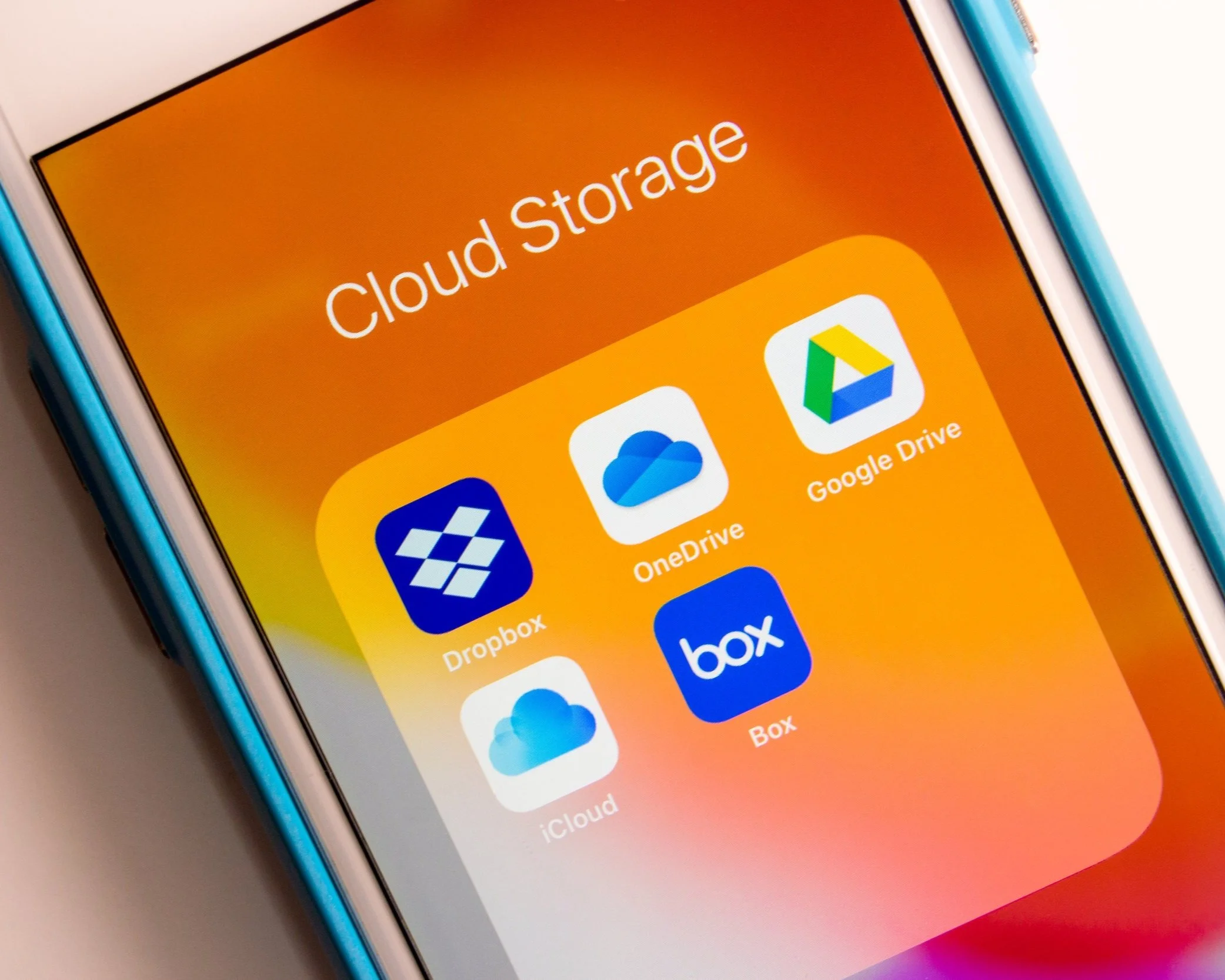
8.01.2 Summarize cloud-computing concepts Part 2
Introduction
In this section of the course, we will explore key concepts like Desktop Virtualization, Cloud File Storage, and Software-Defined Networking (SDN). Think of Desktop Virtualization and Virtual Desktop Infrastructure (VDI) as a way to "digitally centralize" your desktop environment, where everything runs on remote servers instead of on heavy local hardware. This improves security and cuts down on the need for powerful physical machines.
Next, we’ll look at Cloud File Storage, which functions like an online filing cabinet, automatically syncing and sharing your files across devices so you always have access to the latest version. Lastly, we’ll introduce Software-Defined Networking (SDN), which acts as a dynamic "traffic controller" for your network, automating and managing resources based on your organization's needs. Let’s dive in!
Introduction to Desktop Virtualization
Desktop virtualization is a method of provisioning desktop environments using Virtual Machines (VMs). This technology allows companies to replace traditional desktop computers with low-spec thin clients that rely on remote servers to handle most of the processing tasks.
Virtual Desktop Infrastructure (VDI)
Definition: VDI uses virtual machines to host desktop environments. Instead of running a full operating system on each physical desktop, users connect to a VM hosted on a server or cloud infrastructure.
How VDI Works
Thin Clients: These are low-spec computers that run a minimal operating system. They are used to connect to VMs.
Remote Desktop Protocols: When a thin client boots up, it allows the user to connect to their virtual desktop using protocols like:
Microsoft Remote Desktop Protocol (RDP).
Citrix ICA (Independent Computing Architecture).
3. VM Access:
The thin client must locate the correct VM image (the user's virtual desktop) and authenticate the user.
The process of finding the image might be handled by a connection broker, which manages the mapping of users to VMs, either by machine name, IP address, or dynamically.
4. Data Processing:
All processing tasks, including running applications and storing data, are done on the server.
The thin client only needs enough power to:
Display the desktop screen.
Play audio.
Send and receive commands like mouse clicks, keyboard input, and video/audio data over the network.
On-Premises vs. Cloud-Based VDI
On-Premises Server:
Hosted on the same local network as the thin clients.
Easier control over data and infrastructure.
Cloud-Based Server:
Desktops and data are hosted on the cloud, enabling remote access from anywhere.
Can allow companies to completely outsource their IT infrastructure to third-party providers.
Advantages of VDI
Centralized Management: All desktops are managed from a central location, making it easier to:
Perform backups.
Support and troubleshoot desktops.
Improved Security:
Changes made by users can easily be undone by overwriting the virtual desktop with a template image.
Reduces risk from unsecure user practices.
IT Outsourcing: VDI allows businesses to offload their entire IT infrastructure to third-party service providers, reducing the need for in-house IT management.
Disadvantages of VDI
Dependency on Network: If the server or network goes down, users cannot process data locally, leading to complete work stoppage.
Downtime Costs: System failures can result in significant productivity loss due to users' inability to access their virtual desktops.
Introduction to Cloud File Storage
Cloud file storage is a type of Software as a Service (SaaS) that allows users to store, synchronize, and share files over the Internet. Popular cloud storage services, such as OneDrive, Dropbox, iCloud, and Google Drive, offer both free and paid storage options.
Key Features of Cloud File Storage
Automated File Synchronization:
Cloud storage automatically syncs files across multiple devices, such as PCs, smartphones, and tablets.
This ensures that users always have access to the latest version of their files, regardless of which device they are using.
File Sharing:
Users can share files with others, allowing multiple people to collaborate on a document at the same time or at different times.
Collaboration features include:
Tracking edits made by different users.
Commenting and highlighting parts of the document for review.
Examples of Cloud File Storage Services
OneDrive: Integrated with Microsoft Windows and Microsoft 365, providing seamless file storage and collaboration for Office applications.
Dropbox: A popular cloud storage service that can be accessed from multiple platforms.
iCloud: Offered by Apple, it syncs files across Apple devices like iPhones, iPads, and Macs.
Google Drive: Part of Google Workspace, providing storage and collaboration tools.
File Synchronization in the Cloud
Replication Across Datacenters: Cloud storage services often replicate files across different datacenters to improve access speeds and reliability. This means users can download and access files faster, especially when using global services.
Content Delivery Networks (CDNs): CDNs help deliver media and website resources more quickly by replicating files to multiple Internet Exchange Points (IXPs), which are close to Internet Service Providers (ISPs).
Data Reliability and Availability
Data Replication:
Cloud storage services replicate files within their datacenters to ensure they are reliably accessible.
Data is often replicated across different availability zones and geographical areas to ensure high availability and durability.
Cost Tiers:
Cloud storage services offer different pricing tiers based on factors like data replication speed and geographic distribution.
Higher-cost tiers often provide faster replication and more extensive geographic coverage.

Introduction to Software-Defined Networking (SDN)
Software-Defined Networking (SDN) is a model that allows for the automated provisioning and deprovisioning of network components, which is essential for cloud services. By using SDN, networks can be dynamically controlled through software, making it easier to manage resources and adjust them based on business needs.
SDN Layers
The SDN model, as defined by the IETF (Internet Engineering Task Force), divides network functions into three main layers:
Application Layer: This layer applies business logic to control how traffic is managed. It makes decisions about:
Traffic prioritization.
Security policies.
Routing decisions for where traffic should go.
Infrastructure Layer: This layer consists of the physical or virtual devices responsible for traffic forwarding. Switches and routers in this layer perform the actual tasks of moving data through the network.
Control Layer:
The key innovation of SDN is the introduction of the control layer between the application and infrastructure layers.
This layer is managed by an SDN controller, a virtual device that controls network behavior.
SDN Controller and APIs
SDN Controller: The SDN controller is a centralized control point that manages the network. It makes decisions based on inputs from the application layer and translates them into commands for the infrastructure layer.
APIs in SDN:
Northbound API: This is the interface between the application layer and the SDN controller. It allows the application layer to communicate its traffic and security needs to the controller.
Southbound API: This is the interface between the SDN controller and the infrastructure layer. It allows the controller to send commands to the physical or virtual network devices, like switches and routers.
Key Benefits of SDN
Automation: SDN allows for the automation of network tasks through scripting and APIs, making it easier to adjust network configurations without manual intervention.
Flexibility: With the control layer managing traffic, network policies can be changed quickly to meet business needs, like adjusting security settings or rerouting traffic during high demand.
Centralized Control: The SDN controller provides a single point of control for the network, simplifying management and allowing for better oversight.
Summary
In this section, we covered Desktop Virtualization, Cloud File Storage, and Software-Defined Networking (SDN). Desktop Virtualization and VDI allow you to store desktop environments on remote servers, reducing the need for powerful local computers and improving security. Cloud File Storage works like an online filing cabinet, syncing and sharing your files across devices, so you always have the latest version. Lastly, SDN helps manage and control network resources more efficiently, adapting to your business needs. These technologies are crucial for modernizing IT infrastructure and boosting efficiency.



